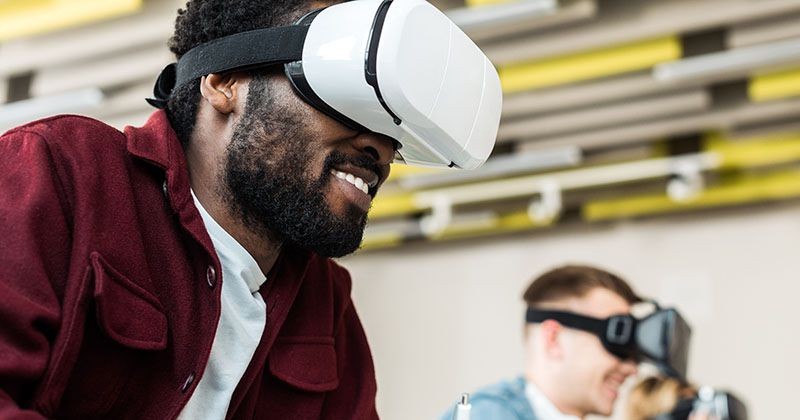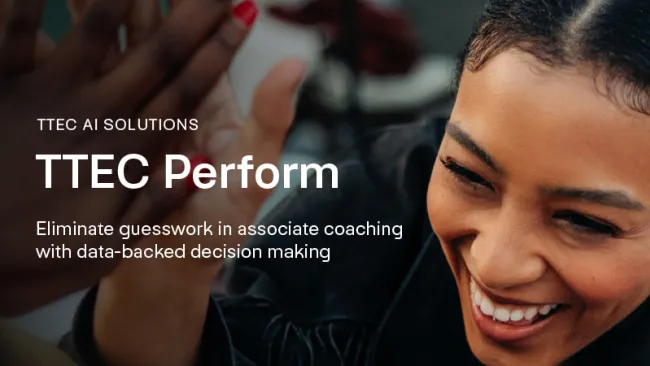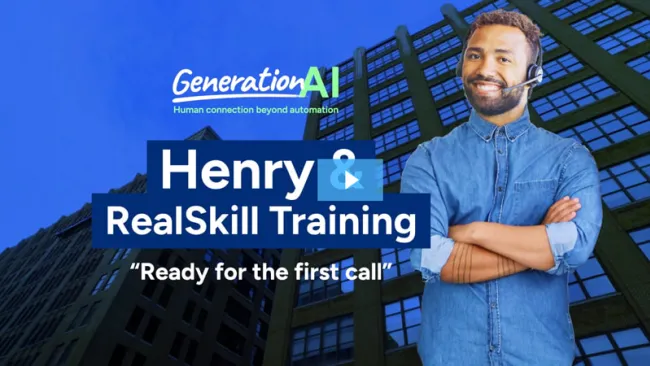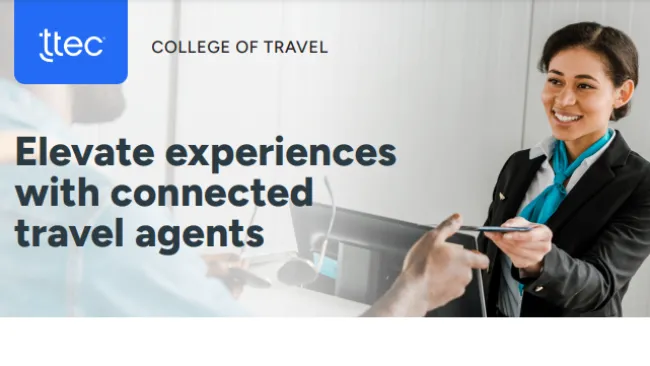When virtual reality (VR) technology first came out it was a novelty primarily seen as an innovative way for gamers to dive into a digital world. It has grown into something so much more—a collaborative and interactive application that is a key tool in any modern workplace’s arsenal. Organizations that want to meet the expectations of the millennial and Gen Z workforce need to understand the types of technology they prefer to use, both for personal and professional use.
The state of VR
VR is gaining traction in immersing users and overlaying digital content on top of the physical world to enhance the traditional training environment in many industries. According to SuperData, 71 percent of organizations have access to VR are using it for training.
Fortune 500 companies are now taking a blended learning approach with VR technology to appeal to a new generation of workers and provide real-time experiences.
In 2019 UPS deployed a VR program that replicated a roadway to create opportunities for drivers to learn road culture and safety education to help prevent accidents in the real world. And Walmart uses VR headsets to test employee knowledge of the store layout, product information, and how to deal with customers.
VR adoption is growing. Zion Market Research estimates that the global augmented and virtual reality market will be valued at $814.7 billion by 2025. For companies focused on employee and customer experience, VR capabilities can help shape the workforce of the future.
4 best practices for VR/AR employee training
It’s time to let Walter go. In your office the two of you talk. It’s a tough discussion, but in the end, Walter understands and shakes your hand. The screen goes dark, you take off your VR headset, and your co-worker takes the tool for a spin. This is the new reality of training.
The beauty of VR technology is that it gives employees the opportunity to perfect training scenarios, such as difficult customer interactions or complicated product instructions, in a safe and responsive environment on their own time, while also enjoying an increasingly relevant and fun technology.
VR technology is not a one-size-fits-all approach to training, however, and it cannot replace everything learned in a traditional training environment. Rather, think of it as an enhancement to immerse employees into key scenarios that will be present in the workplace.
VR capabilities need to be deployed as part of a blended learning strategy that can be incorporated into classroom activities. Here are some best uses of VR for employee training:
1. Conversational training: This is the “Walter” example from the beginning of our story. With VR technology using headsets and joysticks, employees can create incredibly interactive environments to interact with digital characters to converse about situations that would be otherwise difficult or awkward to have with an employee or fellow trainee. Furthermore, it gamifies the experience with video game elements by giving feedback and scores that can be compared with others.
2. Process-based training: VR is becoming more than just “seeing” another world. The controllers that come with most headsets (usually held in each hand) let employees interact and move objects and products that encompass their daily work life. Electricians can learn a protocol for changing faulty wiring several times over without putting themselves in danger, for example, letting them identify the intricacy of their task stress-free. Many programs also offer “randomizer” options, which can create multiple unique scenarios, such as different house floorplans or customer moods.
3. Object-based training: Another hands-on approach, object-based training lets users virtually deconstruct or pick apart their organization’s products to get an in-depth feel for what they are working on. For automotive workers, this is a fantastic method to peel away at the layers of a car to see the extent of damage and how each piece affects another.
4. Collaborative training: A growing field in augmented reality (AR) technology, VR’s cousin, is the ability to connect two smart devices to let workers and “customers” see the same scenario together on one screen. Shared screens can allow multiple trainees to interact on a virtual task together, showing real-time updates, directions, and advice to users while they watch their colleagues’ “digital” hands get to work. This type of training is especially useful in group training, such as classes of customer service employees.
Virtual means = real outcomes
Despite its steady growth, VR is still a fairly new technology. Here are some examples of how companies are realizing various benefits from VR:
Safety: VR training isn’t just practical, it can save lives. Verizon is taking VR to the next level by placing employees in one of life’s most dangerous situations: an armed robbery. As reported in a recent NPR article, “Virtual Reality Goes to Work, Helping Train Employees,” Verizon employees enter a simulated environment where they are held at gunpoint to learn various techniques to ensure the safety of themselves and others. Those who have experienced such situations in real life reflected on the accuracy of the simulation in the article.
Manufacturing environments are also using simulated learning to replicate disasters such as faulty equipment or hazardous scenarios. Platforms can allow them to practice on virtual equipment that replicates the real thing. This can instill a sense of repetition and confidence before they hop onto live production.
There are also the literal safety implications that are developing as well. Geo-fencing capabilities within a VR environment can identify if the user is stepping out bounds and can quickly exit to reveal their actual surroundings. No more wandering into walls or unsuspecting co-workers.
Preparation: Holiday seasons are incredibly taxing for both new and seasoned retail employees. That’s why VR tools can be incredibly useful for critical mass times such as Black Friday. A Vox article highlighted how Walmart is utilizing Oculus Go headsets to replicate the sensory overload that is Black Friday by incorporating large volumes of people in their crowded hallway to create “situational awareness before the big day.”
VR is an excellent application to get employees comfortable with what they may experience during the holidays and to practice improving the soft skills (empathy) needed to communicate with frantic and frustrated customers. “There is not historically a widely accessible safe place to fail when trying to improve your soft skills,” says Kyle Jackson, CEO of Talespin, an augmented and virtual reality technology company (and TTEC partner). “Roleplay is typically reserved for smaller groups of employees and when done in front of a group, it greatly diminishes the learning outcome.”
Reduced costs: VR is very much meant as a tool for people to engage with one another. It also reduces training and enrollment costs. According to SuperData, enterprises that adopt XR training technology will save $13.5 billion that would otherwise have been spent on traditional training that includes instructors, dedicated learning spaces, and travel.
Traditionally, the cost of VR technology has been a barrier to entry. In a 2018 survey, YouGov found that 55 percent of participants saw price as their biggest obstacle. This barrier is lowering, however. We’ve already seen prices dip as the technology continues to improve, with platforms like Oculus Quest coming in at a lower price point and not requiring a separate computer to operate it.
“Products like this make hardware costs associated with adoption and the logistics to get trainees into XR training programs much lower,” says Stephen Fromkin, chief content officer at Talespin. “One of the best ways to go about addressing these issues is by educating industries on how the tech can easily be adopted, lowering the barrier to entry to recognizing ROI.”
Improved decision making and learning: When an employee completes a process, whether it be a repair or a safety walk around a manufacturing floor, the more times they do it the more they understand it. E-learning and classroom lectures have their place, but just think about throwing the perfect pitch in baseball. You can read all you want on it, but it won’t make a difference until you get outside and practice.
Research from the National Training Laboratory shows that learning retention rates for VR are around 75 percent compared to only 5 percent for lectures. That’s because leaders are giving their employees the opportunity to build muscle memory by running them through scenarios that mirror real life.
“Immersive technologies like VR are extremely effective in rapidly transferring knowledge and skills to support employee performance and learning retention,” says Jackson. “This makes it a game-changer for workforce training. Employees can practice key skills for a specialized role, roleplay challenging workplace conversations, or train for emergency situations in a much more realistic, immersive way in comparison to traditional training methodologies.”
And simply put, VR training is more fun than traditional methods. Individual ownership of VR devices is still quite low, resting at just over 10 percent, according to the YouGov study. For many employees it’ll be their first opportunity to test out an unfamiliar but incredibly engaging tool. If given the choice between sitting in a classroom or putting on goggles to be transported to a digital experience, I think many will choose the latter.
It’s time to make VR a reality
This tool isn’t the end all, be all solution for employee training. But it is a step toward reinventing the small ways we engage in an increasingly digital world. If you want to invest in this technology for your employees I suggest you do it slowly, seeing how your workforce adapts to something many might not be familiar with. But I assure you, once they step into this world it’ll be hard to go back to the way things were before.















